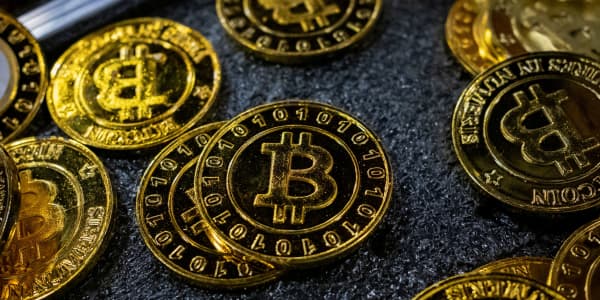Who would have thought that on the day the Federal Reserve hiked its benchmark federal funds rate for the third time in six months, interest rates across the curve would plunge? But that's exactly what happened on Wednesday, confounding many analysts who predicted higher long-term rates.
The Fed made its widely expected move, raising its overnight borrowing rate by 25 basis points to a range of 1 to 1.25 percent, keying off data that showed the U.S. economy at full employment and growing steadily. The central bank's upgraded "dot plot," which maps where central bank officials see rates headed in the future, suggests that another rate hike could be coming later this year.
More from ETF.com:
Tech ETFs retreat: Pullback ahead
Here's what advisors are worried about
Muni ETFs: No summer vacation
But at least for now, the bond market doesn't care. The 10-year U.S. Treasury yield dropped by 8 basis points to 2.13 percent after briefly touching 2.1 percent earlier on Wednesday, its lowest level of 2017 (bond prices and yields move inversely).
U.S. 10-Year Treasury Bond Yield
In turn, many bond ETFs, such as the $46 billion iShares Core U.S. Aggregate Bond ETF ), hit their highest levels of the year. AGG is now up 2.8 percent, while the iShares iBoxx $ Investment Grade Corporate Bond ETF () is up 4.6 percent; and the iShares 20+ Year Treasury Bond ETF () is up 7.1 percent.
Those numbers are particularly impressive considering this was supposed to be a bad year for bonds based on the consensus expectation at the start of 2017.
YTD Returns For AGG, LQD, TLT
Weakest economic data in months
According to Brian Jacobsen, chief portfolio strategist at Wells Fargo Funds Management, the moves in bond prices on Wednesday may have less to do with the Fed rate hike than a pair of tepid economic data points released on the same day.
Early in the day, the Bureau of Labor Statistics reported that its consumer price index (CPI) unexpectedly fell by 0.1 percent in May, while its core CPI (which excludes food and energy prices) only grew by 0.1 percent, below the 0.2 percent increase that was anticipated.
That translates into year-over-year growth of 1.9 percent for the headline CPI and 1.7 percent for the core CPI ― both below the Fed's 2 percent inflation target ― and the lowest reading for the core in two years.
Meanwhile, the Commerce Department reported that retail sales in May sagged by 0.3 percent, much worse than the zero change that was expected and the largest decline in 16 months.
"The data that came out on Wednesday showing a slowdown in inflation and contraction in retail sales has made people question whether the Fed will hike as aggressively as previously thought," explained Jacobsen.
"The big move in 10-year yields came around the same time as the CPI and retail sales data came out. Weak consumer spending and slowing inflation means the terminal rate for the federal funds rate may be well below what the Fed's aiming for," he added.

'Throw in the towel' on higher rates
Perhaps the fall in the 10-year yield shouldn't have been surprising. There's been a familiar pattern in recent years where investors anticipate that rates will finally take off as the economy improves, only to see them come back down as data disappoints.
In fact, despite all the hand-wringing about rising rates ever since the Fed embarked on the current tightening cycle in late 2015, it turns out that the 10-year yield is actually lower today than it was when the central bank made its first hike.
Currently, the 10-year yield stands at 2.13 percent compared with 2.30 percent on Dec. 16, 2015. Even the five-year yield is lower, at 1.73 percent currently, compared with 1.75 percent on the day of the first hike.
Wells Fargo's Jacobsen says that for anyone who's been waiting for higher interest rates to invest in bonds, now may be the time to throw in the towel.
"It could feel like a bus that never shows up if you're waiting for yields to spike higher. If you've been sitting in cash and waiting for yields to rise before getting back to your strategic allocation to fixed income, you may want to start dollar cost averaging toward your target," he explained.
Bearish for financials
Equities have taken these lower rates in stride. The S&P 500 remains in record-high territory amid record-low volatility. Investors aren't interpreting lower rates as a bad thing, except for perhaps financials, which is now the second-worst-performing stock market sector behind energy.
The Financial Select Sector SPDR Fund () is up 5.3 percent this year, well behind the 9 percent gain for the broader S&P 500.
"Financials have been hurt by the flattening yield curve," Jacobsen noted. "That doesn't look to be getting any better anytime soon. If the Fed talks up another rate hike before the inflation data actually turns, I'd worry about the Fed being too far ahead of the curve rather than too far behind it."
— By Sumit Roy, ETF.com




